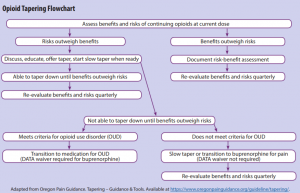This week I want to share two articles about how you can receive the best quality of care for your individual needs. The first article provides a list of questions you should be asking your doctor. The second article is about new guidelines for opioid prescription use. Below are these articles and my thoughts on their implications
Disclaimer: The views and opinions expressed below are those of Mark Pew, Senior Vice President of Product Development and Marketing, and do not necessarily reflect the views of Preferred Medical.
In order to ensure quality health care and optimal outcomes, it is important that you play your part as well. This means being aware of the right questions to ask and information to provide to your healthcare providers so that they can provide the best care possible. This article outlines what you should ask before, during and after your appointment.
Mark’s Thoughts:
Questions are the Answer. Each patient—including injured workers—should be prepared to own their healthcare choices and the only way to do that is to be informed as to all options. The best way to do that is to ask questions (and take notes regarding the answers, an often underappreciated part of the patient’s role in their own care). The Agency for Healthcare Research and Quality (AHRQ) put together some helpful tips on how to do that. They include questions to ask before, during and after your appointment but these are the generic ones to begin with:
- What is the test for?
- How many times have you done this procedure?
- When will I get the results?
- Why do I need this treatment?
- Are there any alternatives?
- What are the possible complications?
- Which hospital is best for my needs?
- How do you spell the name of that drug?
- Are there any side effects?
- Will this medicine interact with medicines that I’m already taking?
Guidelines on opioid weaning address legacy patients
Recently, the U.S. government has issued new guidelines on opioid prescriptions that will help doctors better understand when and how to taper opioid use for patients. These new guidelines can help doctors provide personalized care tailored to the unique needs of each patient (injured worker) by managing their pain effectively and, if appropriate, a safe tapering method.
Mark’s Thoughts:
This article not only provides a great overview of these new guidelines but helpful insights from two physicians, a pharmacist and psychologist that I respect greatly. I’ve consistently said that the 2016 guidelines from the CDC never advocated to discontinue opioids for every patient or to discontinue abruptly (without a strategic weaning plan). Unfortunately, some of that has occurred. So for those that didn’t read the details or couldn’t understand nuance or apply common sense, these new guidelines will be very helpful. You can access the actual guidelines here with a general summary here. It doesn’t matter if you’re a prescriber (of any specialty), a patient (or their caregiver), a payer (or their medical management agent), or even a politician (that designs policy)—everybody should read this. It is filled with great information, including this…

To read everything on my mind this past week, please visit me on LinkedIn at https://www.linkedin.com/pulse/marks-musings-november-11-mark-rxprofessor-pew/.
Until Next Week,

